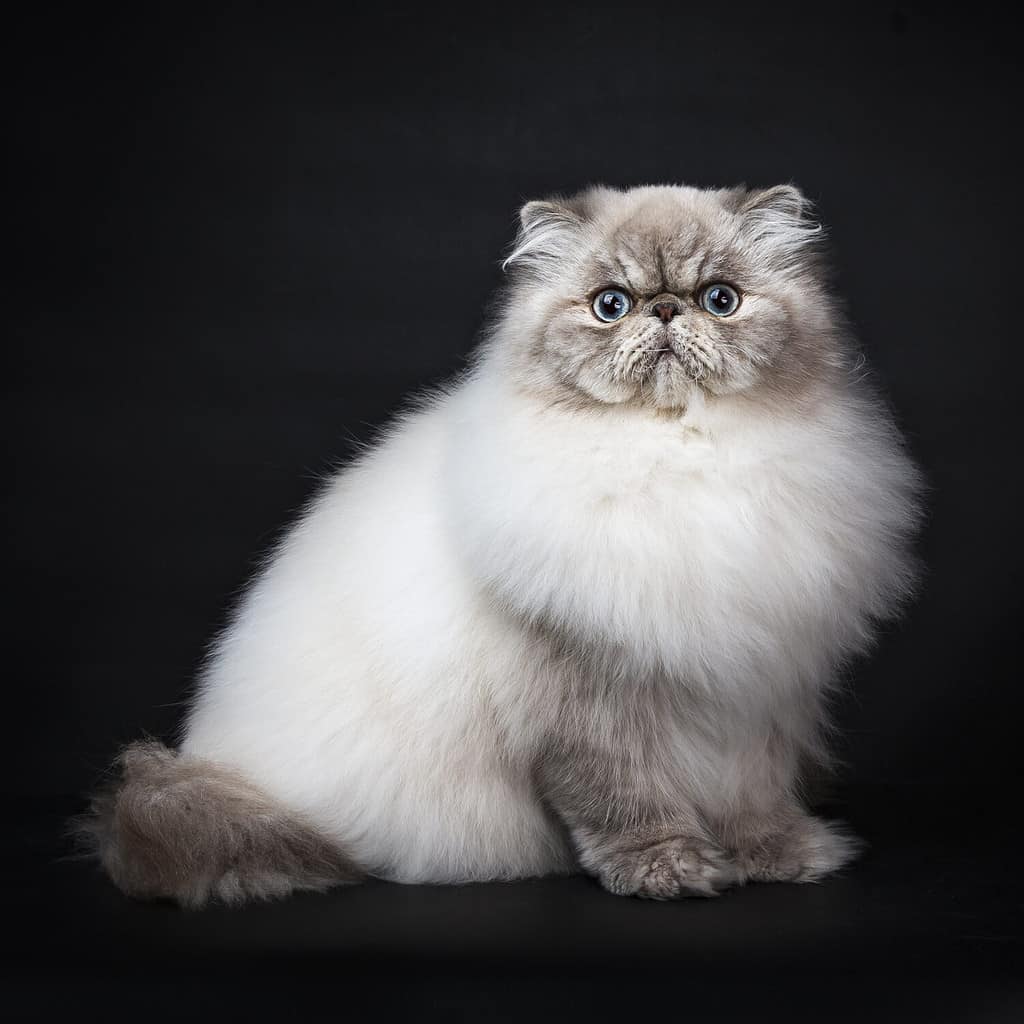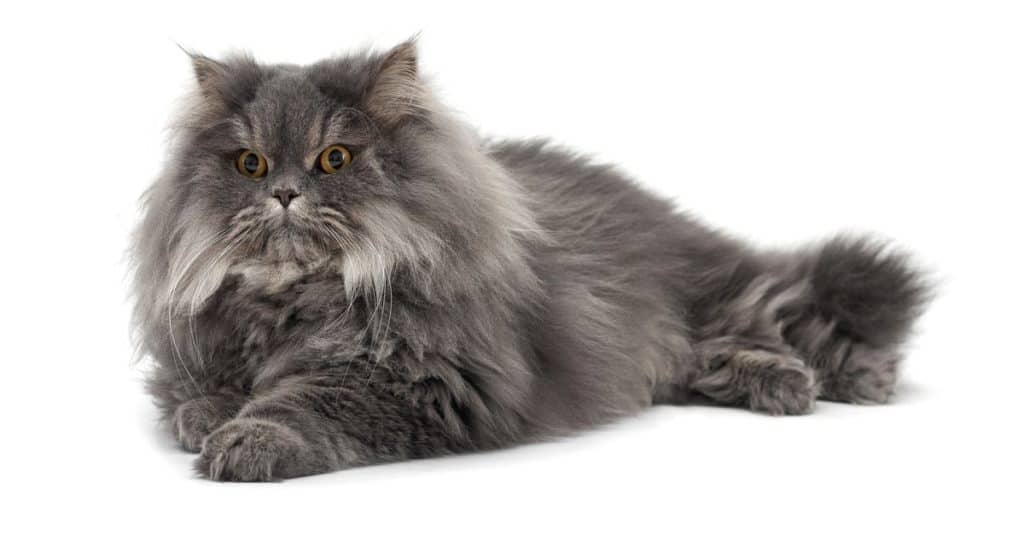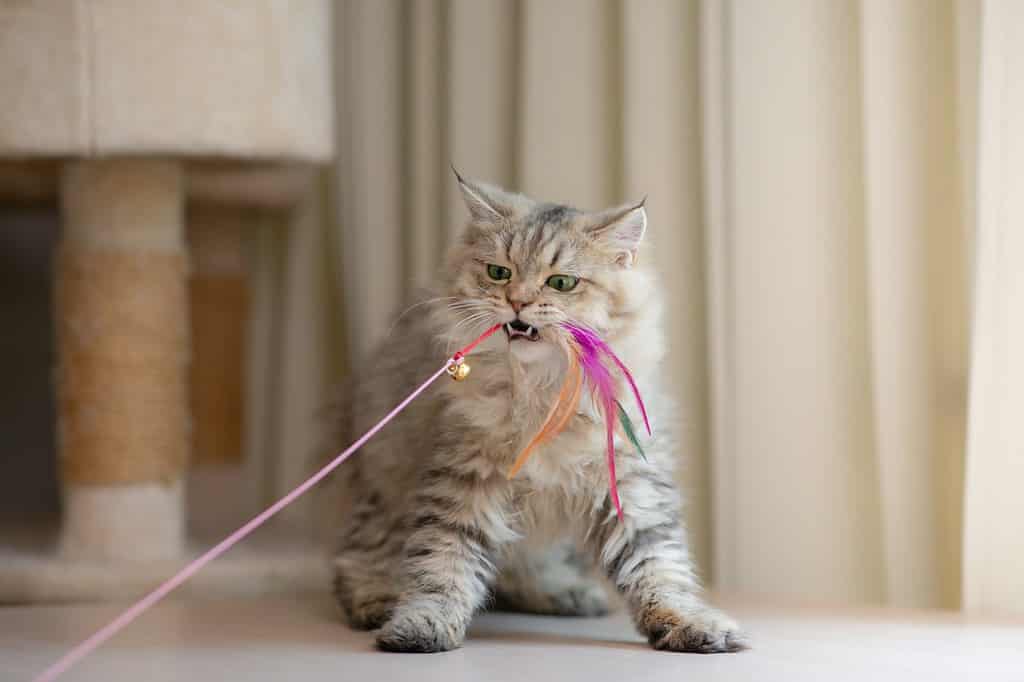The Persian is among the most popular and well-loved cat breeds thanks to its loyal, affectionate temperament, adorably round face and eyes, and long, luxuriously silky fur. If you’re thinking of adopting a Persian feline companion of your own, it can be helpful to get to know the differences between males and females of the breed before making your decision. Below, we’ll take an in-depth look at the three key differences between them and an overview of the breed itself.
Persian Cat Breed History and Overview

Two main varieties of the Persian cat exist today: the modern flat-faced type pictured here and the more traditional doll-faced variant.
©Nynke van Holten/Shutterstock.com
In addition to being one of the most popular cat breeds on the planet, the Persian is a very old cat breed with a rich history. Its origins aren’t known, but its ancestors were first documented in the 1600s. They were most likely imported from the Middle Eastern Iranian Plateau to the Italian Peninsula by various European explorers, most notably Italian author and composer Pietro Della Valle.
Della Valle, in particular, wrote about the cat breed in his travels to the Greater Khorasan region of the Middle East, describing it as a “very beautiful species of cat” native to the area. The name “Persian” for the breed came a bit later after the cats arrived in Europe. By the late 1800s, Persian cats existed throughout Europe and parts of India.
Over time, two distinct varieties of the Persian cat were developed: the traditional “doll-faced” variety and the more modern “flat-faced” type. It’s also historically been a favored pet of European royalty for its uniquely regal appearance and calm, affectionate, and playful temperament. The first Persian cat was officially displayed at a cat show in 1871 in London. In 1906, the breed was among the first to be registered with the Cat Fancier’s Association of America.
Today, the breed remains incredibly popular as a show and general companion cat.
Male vs. Female Persian Cats: Anatomical Differences

Perhaps the most obvious difference between male and female Persian cats is their anatomy, specifically their genitalia.
©pets in frames/Shutterstock.com
When your Persian cat is around four to six weeks old, you should be able to determine their sex. Aside from their difference in size, the variation between their genitalia is the most obvious difference between males and females. The best way to tell the difference is by the appearance of and distance between the anus and either the vulva or penile opening and testicles.
To put it as simply as possible, female Persian cats have a vulva, while males have a penis and testicles. Experienced cat breeders often describe the difference in genitalia as resembling either an “upside-down exclamation point” or a “semicolon.” Female Persian cats will have an upside-down exclamation point appearance to their genitalia, while males’ genitalia more closely resemble a colon or semicolon.
Additionally, the distance between the anus and genitalia is larger with male Persian cats. The distance between the anus and vulva for female cats is only around a half an inch. Meanwhile, the distance for males between the anus and testicles is around an inch or more. Even a neutered male will still have this general appearance to their genitals, albeit with an empty scrotum rather than large, full testicles.
One important factor to keep in mind is it can be slightly more difficult to sex cats and kittens with long fur around their genitalia, such as Persians. It can be helpful to have an experienced groomer carefully trim the fur around the legs and genital area to better determine your cat’s sex, quickly identify any issues or abnormalities, and help keep their genitalia clean from feces and urine in the future.
Male vs. Female Persian Cats: Size Differences

As with most cat breeds, male Persian cats tend to be larger and heavier than females.
©iStock.com/adamdowdee282
Male and female Persian cats’ next most obvious difference is their overall size and general appearance. As a medium-sized breed, most Persians average between 7 and 13 pounds. Males are on the larger end of the spectrum, usually weighing between 9 and 13 pounds. Females are towards the smaller end, weighing around 7 to 10 pounds by comparison.
Both male and female Persian cats have very broad yet short bodies with short legs and necks. However, their paws are comparatively large, and their chests are quite deep and wide. The head of the Persian cat is the most distinctive, generally large and round, with short, rounded ears. Depending on the type of Persian cat, the face can either have a very short, upturned, pug-like muzzle (flat-faced) or a slightly longer, more traditional, yet still fairly short snout (doll-faced).
Like most cat breeds, male Persian cats also tend to have fuller, larger cheeks than females. This is largely due to more testosterone, with intact, un-neutered males having especially large, full cheeks. The difference is less noticeable with neutered males, though they are still larger than females.
Male vs. Female Persian Cats: Personality/Temperament Differences

Male Persian cats are usually more outgoing and social than females. However, this can vary slightly from cat to cat.
©ANURAK PONGPATIMET/Shutterstock.com
The final difference between male and female Persian cats is much more subtle and variable but still worth mentioning. Overall, males and females of this breed have very intelligent, calm yet playful, and affectionate, loyal temperaments. This outstanding personality is a large part of why Persian cats are so popular as a breed.
However, it’s important to note that male Persians are more social, vocal, openly affectionate, and outgoing. By comparison, females of the breed can tend to be more standoffish, quiet, and aloof–at least at first, towards people they aren’t familiar with.
This, of course, isn’t to say you should aim to adopt a male rather than a female Persian, as both sexes are wonderful additions to any home. There are also always outliers when it comes to this standard, with some females being outgoing and some males being shy and quiet. In general, though, this is a notable difference to be aware of as a pet owner.
The photo featured at the top of this post is © Nynke van Holten/Shutterstock.com
Thank you for reading! Have some feedback for us? Contact the AZ Animals editorial team.







